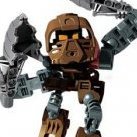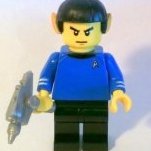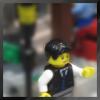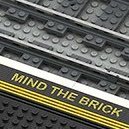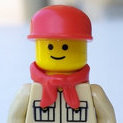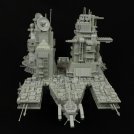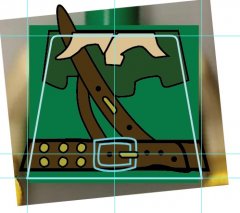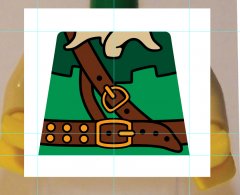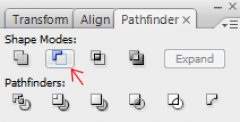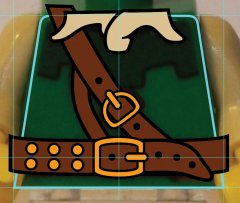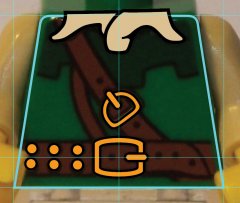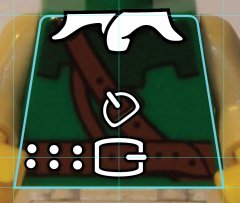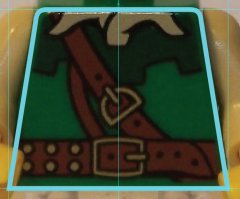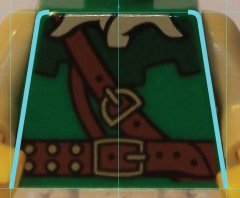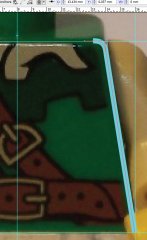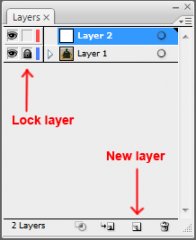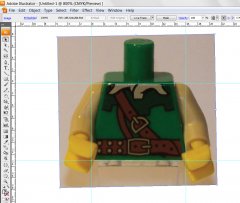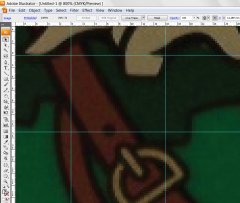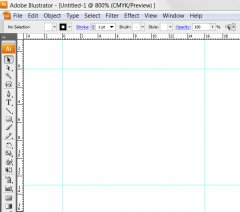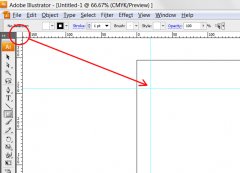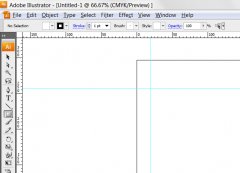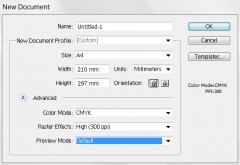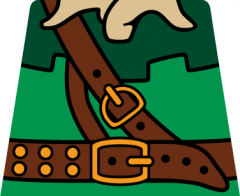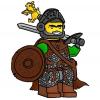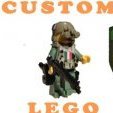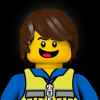Search the Community
Showing results for tags 'design'.
Found 75 results
-

Offroad Vehicle Design bible
Zerobricks posted a topic in LEGO Technic, Mindstorms, Model Team and Scale Modeling
I started this project because I wanted to share my experiences building various offroad models over the last decade. This topic is meant to guide the builders with comparisments, suggestion and best building practices, It is however not a place to find already finished and perfected designs - that's up to you. Various aspects of the design of the vehicles will be split into several subgroups and explained in details. 1. Number of wheels First thing we need to know is how many wheels our design will have. Most common setups are as following: 4x4 Setup Advantages: 1. The simplest and most widely setup 2. Having only 4 wheels means lower weight and higher performance 3. Higher manoeuverability 4. Simple suspension and driveline design Disadvantages: 1. With only 4 wheels the suspension has to be designed to be as flexible as possible to get the most out of the wheels 2. In a case of a mechanical failure of a single wheel, the whole model's performance is greatly affected 6x6 Setup with double rear axles Advantages: 1. Two rear axle provide more traction area, especially when going uphill 2. Usually 6x6 vehicles are longer than 4x4 and therefore less likely to tip over 3. Since the front and second axle are usually closer than in 4x4 setup, there is less ground clearance needed between them 4. Greater redundancy in a case of a mechanical failure Disadvantages: 1. Lower manoeuverability due to a longer wheelbase even with rear wheel steering 2. More complex driveline and suspension design is required 8x8 or more wheels setup Advantages: 1. Having 8 or more allows for much greater traction area 2. Ability to drive over ditches 3. Because wheels are usually much closer there is much less chances of getting stuck on top of an obstacle 4. Excellent redundancy in a case of a mechanical failure 5. Better weight distribution 6. Less suspension travel required per each wheel as with 4x4 or 6x6 and hence better stability Disadvantages: 1. Lower manoeuverability even with rear wheel steering 2. Powering 8 or more requires a very complex driveline 3. Depending on a driveline, combined torque required for powering all 8 wheels can destroy gears if a single wheel gets stuck 2. Type of wheels and tyres Now that we decided on how many wheels we want for our offroad beast, we have to look into what type of tyres and wheels we want to use. I will hereby cover only the bigger types of tyres and wheels. 1. 94.8x44R Advantages: 1. Low weight 2. Good thread design 3. Low rolling resistance Disadvantages: 1. Low traction, these tyres are prone to slip on the rim at high loads 2. Due to its rounded shape the tyres tend to slide off obstacles when crawling over them 2. 94.3x38R Advantages: 1. Low weight 2. Medium traction 3. Low rolling resistance 4. Realistic design and proportions Disadvantages: 1. Shallow thread pattern 2. These tyres are very hard and don't adjust to the terrain 3. 107x44R Advantages: 1. Low weight 2. Medium traction 3. Very deep thread 4. Currently largest tyres by diameter Disadvantages: 1. High rolling restistance and vibrations due to the thread pattern 2. These tyres are a bit hard and don't adjust to the terrain 4. Power Puller tyres Advantages: 1. High traction 2. Good thread 3. Largest Lego tyres ever produced 4. Deep wheel offset Disadvantages: 1. High weight 2. Hard to use, they require complex hub assemblies 3. Very rare and expensive 5. Outdoor challenger wheels Advantages: 1. Very high traction 2. Very good thread pattern 3. Deep wheel offset 4. Over 7 studs of space inside the wheel Disadvantages: 1. High weight 2. Hard to attach to the standard axles 3. They require a lot of torque to use them at their full potential. 6. Tumbler wheels Advantages: 1. Low weight 2. High traction 3. Very flexible Disadvantages: 1. Low thread pattern 2. Small size 3. Expensive For the 94.8x44R. 94.3x38R and 107x44R tyres we have a choice of two wheels: 1. Racing wheel large Advantages: 1. Good mounting option with axlehole and pinhole 2. Available in multiple colours 3. Cheap Disadvantages: 1. No inside wheel offset means steering pivot point can't be placed inside the wheel. 1. Futuristic wheel Advantages: 1. Deep wheel offset allows us to place steering pivot point inside or closer to the wheel than racing wheel large 2. Slightly larger wheel size stops the 94.8x44R tyre from slipping on the rim Disadvantages: 1. Limited mounting options, with only one axlehole 2. Hard to find 3. Hubs Now that we have our wheels and tyres we need a way to mount and power them. Here are the most common currently available options: 1. New standard ungeared CV hubs These hubs are usually driven by the CV joint counterpart which pops inside Advantages: 1. Low steering pivot offset - usually at the edge of the tyre: 2. Firm wheel mounting 3. Readily available, easy to use and to build on. Disadvantages: 1. Low operating angle - the CV joint can operate to a maximum of about 30 degrees, which limits steering angle. 2. Very low torque transfer - the CV joints are prone to deforming and popping out even with low torque applies to them 3. Low ground clearance 2. Old ungeared CV hubs Advantages: 1. Low steering pivot offset - usually at the edge of the tyre 2. Firm wheel mounting 3. Better ground clearance than newer hubs Disadvantages: 1. Very low operating angle - the CV joint can operate to a maximum of about 25 degrees, which limits steering angle. 2. Very low torque transfer - the CV joints are prone to deforming and popping out even with low torque applies to them 3. Hard to find and expensive 4. No other mounting points than 4 ball joints 3. Built cardan ungeared hubs Example of a hub using a cardan joint to directly transfer the power to the wheel Advantages: 1. Low steering pivot offset - usually at the edge of the tyre 2. Easy to build 3. Can transfer higher torque than a CV joint 4. Higher steering angle Disadvantages: 1. Mounting relies only on the axle and is not as firm as standard hubs 2. Not capable of transferring high torque to the wheels 3. Low ground clearance 4. Standard portal hubs Advantages: 1. Easy to use and to build on. 2. Can transfer very high torque to the wheels when using 8z and 24Z gear combination 3. High steering angle 4. High ground clearance 5. Firm wheel mounting Disadvantages: 1. Very high steering pivot offset - requires stronger steering mechanisms and more fender space for wheel to swing 5. Built portal hubs Advantages: 1. Easy to build. 2. Can transfer very high torque to the wheels when using 8z and 24Z gear combination 3. High steering angle 4. Higher ground clearance than standard portal hubs 5. Low steering pivot offset when using futuristic wheels Disadvantages: 1. Wheels are mounted and held only by one axle, not as firm as standard hubs 2. Hub relies on friction of the components to keep it together, which can slide apart after prolonged use 6. Built planetary hub Advantages: 1. Highest gear ratio of all other hubs, 1:4 2. Firm wheel mounting when using futuristic of power puller wheels 3. High steering angle 4. Lower steering offset than standard portal hubs Disadvantages: 1. Requires old turntable, futuristic or power puller wheels for best results - all are hard to find 2. High number of moving gears 3. Least efficient due to the high friction caused by the large surface contact area and number of moving gears 4. Suspension Suspension is the mechanism that will keep our model's wheels in contact to the ground and will be supporting most of its weight. Most of the designs cover 4x4's Following factors determine the type of suspension system we will use: 1. Weight of the model - The heavier the model, the stronger the suspension components have to be 2. Speed - Faster models require more responsive suspension systems with low unsprung weight 3. Flexibility - The higher the obstacles you want to climb over the more flex and/or wheel travel suspension has to provide 1. No suspension I have yet to see and offroad vehicle without any type of suspension (except for maybe 42070, 42081 and 42082), but I will list my opinion regardless: Advantages: 1. Simple design - having no suspension simplifies our design...and that's about it Disadvantages: 1. No flex over terrain means, there are only 3 wheels at once touching the ground 2. Low stability 3. Poor weight distribution 4. No shock absorption at high speeds 2. Pendular suspension This is the simplest suspension you can put on your vehicle. It basically means one or more of your axles are free to swing about. When using this suspension I suggest using the small turntable where drive axle enters the axle. This will keep the drive axle from carrying the weight of the model, which causes unnecessary friction. 42030 is a typical example of this suspension system. Advantages: 1. Simple, robust design 2. Using this suspension on both axles can give the model very high flexibility 3. If there are no springs used, the model can have perfect weight distribution on left and right wheel Disadvantages: 1. Large unsprung weight, poor responsivness at high speeds 2. No shock absorption means this suspension is not suitable for high speeds 2. When using on one axle, the stability of the whole model relies on the unsuspended axle. 3. When using pendular suspension on both axles springs or a transfer mechanism are required to keep the model upright 3. Single torque tube suspension This suspension became available with the release of the 8110 Unimog. Best examples of this suspension are 8110, 9398 and 41999. It is the simplest suspension which also allows for vertical suspension movement. Advantages: 1. Simple, robust design 2. Universal joints can be placed inside the ball joint, allowing power to be transferred to the axle 3. Easy to implement Disadvantages: 1. Large unsprung weight, poor responsivness at high speeds 2. Axle requires a some kind of a linkage system to keep it cenetred (panhard or parallel links as seen above). 3. Using this suspension on the front axle usually results in negative caster angle which causes higher rolling resistance 4. When used on rear drive axle, the suspension has the tendency to cause oscillate, especially with soft suspension and high power 4. Hard to connect springs to the chassis 4. Double torque tube suspension This is an evolution of the single torque tube suspension, which uses two ball joints to drive each wheel side respectively. It is my own original idea. Advantages: 1. Simple, robust design 2. Universal joints can be placed inside the ball joint, allowing power to be transferred to the axle 3. Easy to implement 4. Self-cenetring, since axles are connected in the center there is no need for linkages to center it 5. Can carry power to each wheel side independently 6. Drive torque compensation Disadvantages: 1. Large unsprung weight, poor responsivness at high speeds 2. Using this suspension on the front axle usually results in negative caster angle which causes higher rolling resistance 3. When used on rear drive axle, the suspension has the tendency to cause oscillate, especially with soft suspension and high power 4. Hard to connect springs to the chassis 5. Parallel floating axle This suspension uses linkages which keep the axle parallel to the chassis of the model. For best functionality and reliability the lengths of all links and that of the double cardan joint should be equal. Also all the linkages and drive axles should be parallel. Advantages: 1. Keeping the axle parallel to the chassis reduces the oscillations effect 2. Better responsivness compared to the torque tubes 3. Neutral caster angle when used on front axles. 4. Self cenetring when using A arm as upper link or 4 link setup 5. Can be configured to carry power to each wheel side independently 6. If configured to carry power to each wheel side independently the drive torque can be compensated. 7. Easy to connect spring to the chassis Disadvantages: 1. High unsprung weight, less responsive at high speeds 2. Increased mechanical complexity, double cardan joints required to carry the power to the axle 6. Half axle independent suspension This is the simplest independent suspension you can build. Best example of such suspension are Tatra and Pinzgauer trucks. Advantages: 1. Independent suspension with low unspring weight, suitable for high speed 2. Robust design with low number of moving parts 3. Easy to connect spring to the chassis Disadvantages: 1. Changes of the caster angle as the wheels travel up and down 2. Hard to implement a drive system that does not carry the weight of the vehicle 3. Hard to implement steering system 4. Wheels tend to drag sideways on the ground when suspension travels up and down, reducing efficiency 7. Trailing arm parallel independent suspension Personally I have not used this suspension yet, but I did use a normal trailing arm suspension which does not keep the hubs parallel. Normal trailing arm suspension which does not keep the hubs parallel acts similarly to torque tube suspension. For the prallel version of the trailing suspension I imagine the following: Advantages: 1. Independent suspension with low unspring weight, suitable for high speed 2. Robust design with low number of moving parts 3. Long links allow for high suspension travel 4. Very easy to connect spring to the chassis 5. Can be configured to carry power to each wheel side independently Disadvantages: 1. Hard to keep the wheels from sagging under the weight of the model. 2. Difficult to transfer power to the wheels 8. Double wishbone suspension This suspension uses two A-shaped arms to keep the wheel hubs in place. As of late it's my favourite suspension system due to: Advantages: 1. Independent suspension with low unspring weight, suitable for high speed 2. Very customizable design with lots of adjustable characteristics (suspension arm lengths, caster angle, camber angle, steering geometries) 3. When build correctly it is far more robust than live axle suspension 4. Increased ground clearance compared to live axle suspension, especially when used with portal hubs 5. Can be configured to carry power to each wheel side independently 6. Extremely easy mounting of springs 7. Very stable compared to live axles 8. Frame holding the suspension can be part of the chassis, therebye lowering the center of gravity Disadvantages: 1. More moving parts as live axle suspension, increased mechanical complexity 2. Limited wheel travel - Lego wishbones allow a max. of around 25 degrees of suspension angle 9. Multi-link suspension To be updated when I build my first multi-link offroad suspension. I can assume the following characteristics: 1. Independent suspension with low unspuing weight, suitable for high speed 2. Extremely customizable design with lots of adjustable charactersitics (suspension arm lengths, caster angle, camber angle, steering geometries, virtual pivot point) 3. Large steering pivot point compensation 4. Increased ground clearance compared to live axle suspension, especially when used with portal hubs 5. Can be configured to carry power to each wheel side independently 6. Very stable compared to live axles 7. Frame holding the suspension can be part of the chassis, thereby lowering the center of gravity Disadvantages: 1. Very high amount of moving parts, increased mechanical complexity 2. Limited wheel travel - Lego wishbones allow a max. of around 25 degrees of suspension angle 3. Hard to connect springs to the chassis 10. Spring types Listed below are the most common types of springs available: 6.5L Soft shock absorber Advantages: 1. Small, easy to implement Disadvantages: 1. One stud of suspension travel 2. Low spring rate, can't support heavy models 6.5L Hard shock absorber 1. Small, easy to implement 2. High spring rate, can support heavy models Disadvantages: 1. One stud of suspension travel 9L soft shock absorber When using 9L shock absorbers I suggest you do not use the default offset upper attachment point, but use an in-line attachment point instead. This will reduce the friction and allow for better high speed performance Example: Advantages: 1. Two studs of suspension travel 2. More attachment possibilities than 6.5 L shock absorber Disadvantages: 1. Default attachment points create friction 2. Low spring rate, can't support heavy models 9L hard shock absorber Advantages: 1. Two studs of suspension travel 2. More attachment possibilities than 6.5 L shock absorber 3. High spring rate, can support heavy models Disadvantages: 1. Default attachment points create friction 2. Rare and expensive 11. Attaching springs to live axles If we start with basics, the first things we have to check is how position of springs affects suspension of live axles. The closer you place the springs together, the more flex the suspension will have, but it will also be less stable: I suggest you to keep springs at a distance of around 1/2 of the total model width. When placing springs you should keep them in-line with the wheel bearing in order to reduce friction. First example of bad spring placements: And example of good spring placement: When using multiple springs make sure to place them symmetrically centrred to the wheel hub: When attaching springs to torque tube suspension, you have to allow springs to tilt in two planes: You can also attach the springs to the suspension links to increase suspension travel. This technique is especially common on Trophy Trucks: 12. Attaching springs to independent suspension Independent suspension allows for much more flexible spring placement. Generally the closer you attach the spring to the main suspension arm pivot, the higher spring travel you get, but lower suspension force. Examples going from the hardest suspension with low travel to the softest with high travel: You can also attach springs inside the suspension arms: Or horizontally: As with the live axles make sure springs are in the center of the wishbones. Example of good placements: And an example of bad spring placement, which causes excessive friction and suspension binding: 5. Steering Steering is the system which allows our model to change direction. Generally there are two types of steering system used: 1. Skid steering Advantages: 1. Very simple to implement and control with two separate motors for left and right sided wheels. 2. Does not require a dedicated steering motor Disadvantages: 1. Not efficient, since wheels have to skid to steer 2. Power had to be reduced or even reversed in order to steer. 3. Not very accurate 4. Not very effective offroad 2. Classical steering with steerable wheels Advantages: 1. Efficient, with minimum loss of speed 2. Accurate 3. Does not reduce the power of the drive motors 4. Can be used in front, rear or all axles for tight steering radius or crab steering 5. Effective offroad Disadvantages: 1. Requires more complex hub assemblies 2. For best steering accuracy you need a dedicated servo motor. Examples of a simple classical steering system for live axles 1. Parallel steering system for live axles Here both hubs are always parallel. Position of the steering in the front or rear rack has no affect on the steering. Advantages: 1. Very simple and robust 2. Easy to build Disadvantages: 1. No Ackermann steering geometry 2. Steering rack moves inwards as it steers, requiring more space. 2. Ackermann steering system for live axles This system allows the hubs to steer at different rates. The steering arms are offset inside so they form a virtual steering point where at the point where lines meet. Advantages: 1. Better steering performance Disadvantages: 1. More complex assembly 2. Steering rack moves inwards as it steers, requiring more space. 3. Steering system with diagonal linkages This system acts similar as Ackermann steering system by using diagonal steering links. Advantages: 1. Better steering performance 2. Steering rack only has to move in one direction without sideways movements 3. Can be configured to be used in front or the rear of the axle. Disadvantages: 1. More complex assembly 4. Simple steering system for independent suspension 1. Very simple and robust 2. Easy to build 3. Can be even more robust when using double steering racks and links 4. Steering rack only has to move in one direction without sideways movements Disadvantages: 1. No Ackermann steering geometry 5. Ackermann steering system for independent suspension Advantages: 1. Better steering performance 2. Steering rack only has to move in one direction without sideways movements Disadvantages: 1. More complex assembly, less robust. 3. General steering tips 1. When using independent suspension always make sure your links are paralel to the suspension arms, otherwise you may end up with wheels which are not parallel and are causing excessive friction: 2. When using standard portal hubs make sure your steering system is robust enough to deal with the forces generated by wheel driving into obstacles. 3. If possible use servo motors which allow for high steering precision and return to center. They are especially useful at high speed models. 4. Most efficient way to steer the wheels is using the steering racks. 5. Build axles in such way they have positive caster angle, example for direction of travel from right to left. This will self-center your wheels and reduce rolling resistance. 6. Drivelines Drivelines are the responsible for transferring the power from the motors to the wheels. There are various drivelines you can build, here I listed few with their characteristics: Driveline types 1. Permanent 4x4 Advantages: 1. Simple, centralized, low mechanical complexity 2. Wheels are always powered, great offroad performance 3. Light weight Disadvantages: 1. Poor steering radius 2. Tyres have to skid when steering, lowering efficiency of the model 2. 4x4 with open differentials Typical example of this driveline is 42070 Advantages: 1. Differentials allow the wheels to so spin at different rates when steering 2. Very efficient since wheels don't have to skid when steering Disadvantages: 1. If one wheel loses traction, all the power is transfereed to it, poor offroad performance 3. 4x4 with lockable differentials Advantages: 1. Differentials allow the wheels to so spin at different rates when steering 2. Very efficient since wheels don't have to skid when steering 3. All differentials can be locked, so wheels are powered for great offroad performance Disadvantages: 1. Higher mechanical complexity 2. Dedicated motor is required to actuate differential locks, higher weight 4. Axle mounted motors Typical example of this driveline are 9398 and 41999. Advantages: 1. Differentials allow the wheels to so spin at different rates when steering 2. Very efficient since wheels don't have to skid when steering 3. If one wheel gets off the ground the second axle can still pull/push the model. Disadvantages: 1. Higher mechanical complexity 2. Usually the rear axle motor is more loaded than the front, especially when climbing uphill, the motors can't "help" each other. 3. Worse offroad performance than permanent 4x4 5. H drive: This is my favourite driveline due to the following reasons: Advantages: 1. Motors allow the wheels to so spin at different rates when steering 2. Model can skid steer 3. Very efficient since wheels don't have to skid when steering normally 4. Having 2 drivelines allows you to carry more torque to the wheels 5. Redundancy, even if one drive fails the model can still move 6. Wheels are always powered, great offroad performance Disadvantages: 1. Higher mechanical complexity 2. Slightly higher weight 6. Wheel motor drive Each motor powers a wheel independently. Advantages: 1. Motors allow the wheels to so spin at different rates when steering 2. Model can skid steer 3. Very efficient since wheels don't have to skid when steering normally 4. Redundancy, even if one or more motors fails the model can still move 6. Lower mechanical complexity Disadvantages: 1. Motors can't "help" each other 2. Higher weight due to a higher motor count Transferring power axially When transferring power via axles, you can reduce the flex by using connectors instead of simple "bare" axle: Use axles with stops to prevent them from sliding out of gears: Where possible always brace tooth gears from both sides: Transferring power at an angle Where pairs of U joints are used, make sure to align them to eliminate vibrations: Brick built CV joint which can transfer high torque at over 30 degrees angle Brick built cardan joint which can transfer extremely high torque up to 15 degrees angle Brick built flexible drive which can transfer medium high torque, extract and retract, suitable for low angles Transferring power perpendicularly The following perpendicular gearboxes are the best suitable for transferring high torque Avoid knob and worm gears, because they waste energy Gearboxes In my models I generally use the following gearboxes: 1:3 differential gearbox Advantages: 1. Very high gear ratio between low and high gear, 1:3 2. Capable of transferring high torque 3. Very efficient since only 2 gears are used at any time Disadvantages: 1. Takes a lot of space 2. This gearbox requires a good housing to brace the gears properly Compact two speed gearbox Advantages: 1. High gear ratio between low and high gear, 1:2,77 2. Capable of transferring high torque 3. Very efficient since only 2 gears are used at any time 4. Very compact design Disadvantages: 1. Requires two of the rare 20 tooth clutch gears 2. More complex shifter assembly. Diagonal gearbox Advantages: 1. High number of gears 2. High gear ratio possible, over 4:1 2. Capable of transferring high torque 3. Very efficient since only 2 gears are used at any time Disadvantages: 1. Takes a lot of space 2. Input and output axles are not parallel. 3. A complex shifting assembly is required for sequential operation. Driveline effect on suspension Transferring torque on the wheels can affect the suspension, especially when live axles are used. The following photo shows how the torque causes one side of the axle to push down and the other to lift up: In order to minimize this effect I suggest the following: 1. Make sure to have most if not all the downgearing inside the axles, so you do not need high torque going to the axles. 2. Make sure your models have a low center of gravity 3. You can eliminate this effect by using two counte rotating axles which cancel each other's torque, example below: 7. Motors and control Following are the most common types of motors used for Lego models. You can find more info here: http://www.philohome.com/motors/motorcomp.htm My personal favourites are L and RC motors due to the balanced output speed to torque ration and great mounting options. 1. PF-M Advantages: 1. High speed output 2. Smallest available motor 3. Cheap and available Disadvantages: 1. Low torque 2. Poor mounting options 2. PF-L Advantages: 1. High speed output 2. High torque 3. Cheap and available 4. Great mounting options Disadvantages: 1. Odd shape 3. PF-XL Advantages: 1. Very high torque 3. Cheap and available 4. Good mounting options Disadvantages: 1. Slow speed output 2. Large form factor 4. PF-Servo Advantages: 1. Very high torque 2. Very precise output with 15 positions 3. Good mounting options Disadvantages: 1. Slow speed output 2. Output axle can move a max of 180 degrees 3. Large form factor 4. Hard to find 5. 9V-RC motor Advantages: 1. Most oowerful Lego motor 2. Very high speed output 3. Good mounting options 4. Two output axles with different gearing ratios 5. Drive axles can pass through the motor Disadvantages: 1. Low output torque 2. Low efficiency 3. Power hungry 4. Odd form factor 5. Hard to find and expensive Power options 1. PF - AA battery box Advantages: 1. High capacity 2. Good mounting options 3. Works with rechargeable batteries, but with lower performance 4. Cheap and easy to find Disadvantages: 1. 750mA current limit - not enough to fully power RC motor 2. Heavy 3. Has to be removed and opened to replace batteries 4. Wasteful 5. Odd form factor 2. PF - LiPo battery box Advantages: 1. Small form factor 2. Light weight 3. Easy to recharge Disadvantages: 1. 750mA current limit - not enough to fully power RC motor 2. Low capacity 3. Studded design 4. Expensive and hard to find 3. RC control unit Advantages: 1. No current limit - can power 2RC motors at once 2. 3 Power levels 3. Has integrated steering output with 7 positions 4. Good mounting options 5. Easy battery replacement 6. Radio based control Disadvantages: 1. Poor quality, prone to breaking 2. Limited angle (45 degrees) and torque from the steering output 3. Has to be removed and opened to replace batteries 4. Very large form factor 5. Expensive and hard to find 6. Heavy 7. Required dedicated antennas and remote Control options 1. PF receiver and controller Advantages: 1. Receiver is easy to integrate into the model 2. Controllers have physical feedback 3. Cheap and easy to find Disadvantages: 1. IR based, low range, useless outside 2. Lack of PWM motor control, unless using train controller which is awkward to use 3. Odd form factor for use with steering 2. RC control unit See above 3. Third party options such as BuWizz and Sbrick Advantages: 1. Smaller form factors, easy to integrate into model 2. More outputs than PF system 3. Smooth control of motors 4. High range thanks to Bluetooth control 5. Higher power available with BuWizz 6. Customizable profiles Disadvantages: 1. Smart device is required 2. No physical feedback 3. Sbrick is limited by PF battery box 4. Price 8. Chassis Chasis is the backbone of your model which olds everything together. For chassis I suggest you to use the following components in order to make it strong and robust enough to deal with the stresses involved when crawling or driving at high speed: Some flex in the chassis might be a good thing to improve offroad capability, but only if id does not affect the driveline and cause friction on the drive axles. Remeember to use diagonal support, since triangles are the strongest shapes. You can also use panels and motors as structural support. Interlocking your chassis will keep it from slipping apart. For good examples of chassis designs I suggest you check the instructions for 9398 and 42083.- 35 replies
-
- power functions
- cv
- (and 16 more)
-
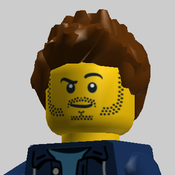
LEGO Decals printing: what are the best options?
Hidronax posted a topic in Minifig Customisation Workshop
Hello :D I have made a few decal design I'd like to print or get printed, but I am not sure about what is the best way to do it. Is it better to do it at home? Or is there services I can use? (I live in the UK, in case you have specific services to recommend) Most services online assume you want to print a large number of the same sticker, but it's not my case. I've seen also many people use the "laser printer" technique to print their own stickers at home. Do they turn out durable? Do they have good quality, is the dithering noticeable? In the past I had stickers printed on a PVC sticker sheet, but they were too think and didn't stick enough, so over a few hours they'd just come off round surfaces like minifigure heads. Also, they were very easily scratched, which is not great... If you don't mind sharing photos of your own custom decals, it'd be greatly appreciated! Thanks :)- 15 replies
-
Hi everyone I'm happy to share my second MOC which I have been working on over the last 5 months. I build the MOC with BrickLink Studio 2.0 and used the new Eyesight Render for my images. The MoMA - Museum of Modern Art is a MOC modular building inspired by modern architecture. The MOC has several highlights like a staircase fully made of glass bricks or a full-functional elevator on the backside. The MOC includes many of advanced building techniques and has a high level of details on each floor. It’s built on two standard 32 x 32 base plate and includes 18 minifigures, 28 paintings and 8 sculptures. The dimensions of building are 10.2x20.6x18.2 inches (width x length x height) or 26 x 52.3x46.2 cm. Level 1 - Entrance – Museum Store – Art Gallery The first floor contains the main entrance of the museum with a cash desk and a small design store for gifts and souvenir. The art gallery on the ground floor contains 6 paintings and 3 sculptures. Minifigures Older couple interested in modern art Museum employee operates the cash desk Store seller serves a customer Art-hipster buys a souvenir Security guard enjoying his coffee break Art Student looks at the sculpture Tourist interested in art Level 2 – Restroom – Art Gallery On the second floor there is a toilet for visitors and a gallery with a view into the ground floor. The art gallery on the second floor contains 11 paintings and 1 sculpture. Minifigures Artist looking for new inspiration Art interested friends couple Level 3 – Security Control Room – Art Gallery – Art Terrace On the third floor there is a security control room to monitor the valuable paintings and sculptures. A highlight in the art gallery in this floor is the large flower sculpture. A small outdoor area offers further space for abstract sculptures. The art gallery on the second floor contains 5 paintings and 3 sculptures. Minifigures Security guard what happens in the museum Father inspires his daughter for art Art lecturer during his lunch break Level 4 – Viewing platform – Art Café On the fourth floor there is a small Viewing platform on the top of the building. In the cozy art café, visitors can enjoy a piece of cake and coffee while enjoying the view through the large panorama window. Minifigures Barista conjures a work of art from every coffee. Visitor enjoys her coffee after an exciting museum visit Visitor treats herself to a cool drink and a slice of pizza Thanks very much for reading and I hope you like my second MOC. There are more pictures on Bricksafe and feel free to support my MOC on Rebrickable and let me know what you think about. At the moment I am building my MOC with real Lego bricks. As soon as possible I will post any photos of the real lego building.
-
EDIT: Survey is now closed, thank you for your responses! Hello, I am a third year student, currently studying Graphic Communication and Typography at the University of Reading. I was lucky enough to be able to use LEGO in my dissertation topic, and as my research has progressed, I have found it necessary to run a survey. And what better place to open the survey to but LEGO forums?? Below, you will find a link to the dissertation survey, which contains some more information on the type of survey and research, as well as the survey itself. It shouldn't take long for you to complete and I would greatly appreciate your thoughts and responses. [removed] (If you are answering on mobile, you will have to turn your screen landscape to see the questions in full) Many thanks in advance and have a great day, Oli P.S. My ethical clearance for this survey only allows for me to collect 100 responses, so if the survey doesn't seem to be working – it may have hit capacity already!
-
First Helryx Canister Design update! Round 1 Sketches Overview Hi everyone! I’ve created this topic to post progress of the Helryx canisters that I will be working on. This is my first topic ever created here so I really hope I did this correctly and am not violating any rules. I started this project on the TTV message boards, but have recently discovered this great community here & wanted to start interacting with y'all, seeing your work and sharing my own. My overall thoughts on this project & motivations on it can be found on the links below (which will bring you to said TTV message boards): Helryx Kickoff Helryx Canister Project Movitation Basically, the long+short of it is that I will be designing canisters/containers for each of the TTV canonization contest characters. I am really looking for lots of feedback to make this as top-quality as possible, so please let me know your thoughts! I’ve initially started sketching for the Helryx canister: Round 1 Sketch 1 Round 1 Sketch 2 I’m wanting to go with an ‘old-skool’ canister look, something from the likes of 2001-03. Obviously far from flushed out yet, been mostly working on the lid. I personally have my own thoughts about these designs but will keep them to myself for the moment - I want to hear yours! I really want community involvement/opinions to help make this the best it can possibly be. So please, comment, critique, criticize, and ask away! I’m looking to solicit as much feedback as possible while I keep sketching. Hoping to post again after another round of sketching (maybe 5ish days?) HM (edit: I know how annoying it can be to have to use imgur links to view someone's work/moc/etc. I tried to upload images directly to the post, but they appear to be too large - over the .1MB max size. If anyone knows how to help me out with this, that would be much appreciated Further edit: Was able to size down some of the images so that they are all (hopefully) displayed in the post without having to click on any links. Please let me know if this is working well, as I have lots more images to post haha)
-
Occasionally, LEGO ends production of a set early or updates one mid-production because it realises it has made a design mistake. And sometimes, especially in Technic sets, an AFOL finds a better way of achieving a technical goal that LEGO has missed. Those situations are not what this post is about. This thread is to discuss LEGO's bizarre design decisions that must have been obviously weird to the designers... but they went ahead with anyway. Here's an example I came across recently when writing an article for Brickset: the mech's hands in set 71640 Iron Man Mech. Pretty much every review of this set including Jang's has questioned why the mech has a protrusion from the little finger side of the palm. You can see it in the mech's left hand in the picture above. It looks out of place and serves no purpose. Why didn't the designers use two 2 x 1 plates, one with a wheel attachment for the thumb and one without? I am aware that LEGO's designers have to operate within constraints, but it would have only added 2 to the parts count (one for each hand) and negligibly more to the cost. It is no less robust than the 2 x 2 plate with two wheel attachments, so why? If you're wondering what the hand would look like without the superfluous attachment, here's my mod: Any ideas why LEGO didn't do this? Also, what build decisions by LEGO seem strange to you?
-
Waaayyy back in 2007, the Lego Group started one of their arguably most successful ventures in recent history- the Modular Building series. There have been 12 sets to date, and with such a large source material, patterns, themes, and styles can be picked out and analyzed. This post is for anyone with an appreciation for the Modular Buildings, and particularly for those who plan to or have built one in the past. I hope you come away with a deeper understanding of what makes these buildings so lovely, and an eye for detail that others may overlook. The Cafe Corner was the progenitor of the modular series, and played a large hand in establishing trends and guidelines for the series. The building has a bottom floor done in a contrasting color to the upper levels, horizontal color striping, strong focus on texture, accent colors, and color blocking, as well as an asymmetrical design. All of these concepts will be discussed in further detail. The Green Grocer is the truest 'successor' to the Cafe Corner, in that carries over the big ideas of the set much better (in my opinion) than Market Street, and thus takes the #2 spot on the list. Note that the build uses Sand green and tan as its primary and secondary color, with blue and brown accents, as well as the requisite modular color palette of light & dark grey, black, and white. It also solidified the modular pattern of a tall first floor. The modulars frequently look good because the adhere well to the golden ratio. This is executed by having the first floor of the building be much taller than the subsequent floors. Here I begin a deconstruction of what makes a modular building a modular building. In this render, can you tell at first what is different about the build? The sand green 'texture' bricks have been changed to flat faced bricks. Texture bricks, including but not limited to 'brick' bricks, grille bricks, garage door bricks, and those odd little poofy bricks have all been used in Modular buildings to give an extra layer of visual 'crunchiness' to a build and can cause a MOC to seem off without careful inclusion. Striping is another key component of the modulars. Lego is a naturally stripe-forming medium, given the need to have each floor divided by a 2 plate tall difference, at minimum. But the modular buildings lean fully into this identity, making liberal use of striping throughout their builds. The Green Grocer has tan striping on the upper floors and dark green on the base floor, along with light/dark grey between the floors. Finally, color blocking is important not only in a modular building, but in ANY Lego MOC. A solid slab of color with nothing to contrast against it is boring to the human eye. Even in the most minimalist abstract compositions (Like Piet Mondrian's Red, Blue, and Yellow or Mark Rothko's Orange, Red, Yellow, there are implementations of color blocking in order to give the piece visual interest). Here, the light grey 'gutters' have been removed from the building, as well as the 2x2 inverted slopes that signal the shift from building front to the roof. There is further reduction that could be done here, but the removals as they stand give such a different impression from the final set that the point should be obvious. The Fire Brigade is a masterpiece of color blocking, texture, and depth. The build is indisputably based on an American firehouse (that flag doesn't lie!), and a great many lackluster MOCs draw on a similar brownstone/terrace house façade. One of the more notable things that sets the Fire Brigade apart is its depth. The central 'column' of the façade is set forward one brick from the rest of the façade, and its line continues upward, bringing the eye to the belltower atop the building. The left and right flanks of this column are recessed, not only by being 1 stud behind the center column, but also being bookended by SNOT texturing on the far left and right of the building, giving the facade a sort of W shape, if viewed from a bird's eye view. This serves to break up what could very well be a boring façade. Additional elements that balance the 'whitespace' of the building against visual interest are the flag, fire helmet displays, and date. Many a builder has incorporated similar elements into their builds without understanding what purpose they serve. These elements were not added to the build simply because the builder wanted to put a SNOT date in a build, but rather because they serve to add visual interest to sections of the build that would otherwise be bland, while still being balanced against the rest of the façade. The Grand Emporium is an exercise in how to successfully use repetitive structures in a build without it becoming bland. Take a moment to absorb the build and try to figure out how exactly the designers differentiated sections of the build. Firstly, the sections of the build themselves are visually interesting, incorporating texture bricks, varying depths, and striping to give a strong base level of enjoyable design that is built on in some surprisingly simple ways. This building makes liberal use of simple decorations to balance the build and prevent it from drowning the viewer in symmetry. The mailbox, ice cream stand, window washer, and billboard all stand to work as enjoyable elements that draw the eye around the build, preventing the viewer's mind from simply noting the pattern of the build and passing along. They also help to weight the build's center of focus down towards the first floor, something that the differently colored floors help to do in the modular building series. Though this analysis is focused on what the modular buildings share, each one exercises a different muscle in bucking convention. Not only does the Pet Shop throw the standard of one building per set out the window, it also challenges the pattern of differentiated bottom floors in the red building. Instead of using a contrasting first floor to draw visual interest, the red building focuses attention vertically on the bay window, similar to how the Green Grocer had its bay window highlighted by its own 'frame'. In order to compensate for this, the red building leans more heavily on texture and depth to lend visual interest to the rest of its bottom floors, along with a 2nd, weaker vertical line through the windows and door. The Pet Shop itself, on the other hand draws more from the past buildings, with a contrasting bottom floor, lots of striping and garage bricks, and a more symmetrical build. It's also notable for introducing the now-common technique of adding planters around windows to give them greater visual interest. The Town Hall set is similar to the Fire Brigade in that both are based on American architecture from the 1900's, in line with the rest of the modular building series. The Town Hall again uses a protruding center section to give visual interest and carry the eye towards the top and the clock tower. Whereas the Fire Brigade used the garage door to do this on the ground floor, the Town Hall uses the greek columns and a tympanum to concentrate the lines of the structure upwards. Another notable feature is the use of 'puffy' bricks to separate the windows and give visual interest. The Palace Cinema is unique in that it is both an homage to the Cafe Corner AND Grauman's Chinese Theatre. You can see the dark red roofing and brown windows with round tops, as well as the parallelogram top as the homage to Cafe Corner, and the general asian design and theatre aspect. Much like Cafe Corner, the façade is separated into 3 sub-structures- the left and right walls and the central column. The left and right walls use varied depth and dark tan elements to carry the eye upwards and accentuate the border between the 2nd floor and the roofline. The Parisian Restaurant again bucks modular convention in that the bottom floor is mostly the same color as the second floor. However, the use of brown windows and white accent pieces give it a different feel. Throughout the build, the designers use a concert of olive green bricks and white bricks as contrast, with a similar grey border scheme to the Green Grocer. The Detective's Office is another American styled building, but it is very different from the previous Fire Brigade and Town Hall. It uses separate color palettes to differentiate the 'separate' buildings, though they are truly just one large building built together. The barbershop makes heavy use of striping, both vertical and horizontal, to give the build more visual interest. Without the contrasting blues, the right façade could be visually boring, but because they are varied, the structure is interesting. Note as well the building's use of dark blue and tan instead of the normal light grey or black to differentiate the bottom floor. What truly makes this building stand out is the harmony of the striping, depth, and color used. The windows are recessed 1/2 a brick, the horizontal stripe continues their visual narrative around the side of the building, and the color focuses the eye inwards on the windows. The Brick Bank is a good example of how a build with a muted color palette can be made to stand out. The main colors are the monochrome spectrum of white, light and dark grey, and black, but the critical accents of dark tan and sand green stand out so much more because of this. By smartly using color, you can accent your builds and take them up a level. Assembly Square, while being an homage to ALL the past modular buildings, is also a great keystone to hold together all the techniques and ideas so far. The bakery building is primarily tan, but uses the dark orange tiles as texture and also to give the front a color that has a limited number of pieces in production. The florist uses varying depth on its second floor to break up an otherwise simple façade. The cafe uses white tiles to carry the eye up the façade, as well as grill bricks to give the wall visual interest. The bottom floor of all three buildings uses more basic colors and a large number of windows in order to differentiate the upper floors. The color is blocked together on all 3 buildings into sections to give the accent colors more power. Additionally, the rooflines of each building are textured across to, again, give visual interest. One more feature that I've neglected to point out is that the upper floors of a large number of the modulars use a lower line that is different from the upper parts. Here you can see it in the bakery with the grey jumper plates, in the florist with the flowers, and the cafe as the tan/dark tans. So after analyzing the modulars themselves, I will try to deconstruct MOC modulars and what they do wrong and right. First is a build by /u/Vinklem (on Reddit) that attempts to scale up the Corner Deli set. They get the first floor right in that there is good use of windows and differentiated colors, as well as striping between the upper floors. However, the upper floors do not have a cohesive visual line, and there is no depth variation, leading the build to appear as one large, flat plane instead of a visually separated building. The builder could have improved on this by carrying the line between the Lego store and the deli up the building. This building by /u/SeargentSasquatch gets the texture elements and use of light grey correct, but it fails in carrying a cohesive line up the façade and in differentiating the upper floors from the base. The building has more color around the back, but by not letting that shine through the front the builder has given their building an almost brutalist aesthetic. The build could be fixed by carrying other colors around to the front, and varying the depth of the windows on the center of the building to make a more cohesive line. I picked this building by /u/dm86 because while it mimics many of the aspects of the Pet Shop builds, it loses something in the execution. The most obvious issue is the failure to differ the bottom floor from the upper two. By having a short base floor with a tan color that continues up the build, the builder sacrifices the golden ratio proportions that both the Pet Shop buildings have. The build could be fixed by heightening the bottom floor, sticking to light grey and dark green on the upper floors, and adding texture around the windows in order to have a good looking build. This build by /u/whit123 captures the Modular aesthetic the best of the builds we've looked at so far, but still has some flaws to be addressed. The building does a good job of color blocking and texture. The ground floor is too short, however, and there is no differentiation between the 2nd and 3rd floors. Additionally, the white color blocks are somewhat overbearing- the builder could have used a different color, possibly tan, for the texturing above the windows and the flower beds below. This build, by /u/shdon, is our closest yet! It captures the first floor at an appropriate height, has cohesive lines and color blocking, and even depth in the windows! But it fails in the avenue of depth. This could allow it to truly come into its own. As it stands, the build is solid, but it lacks the character that depth variation in the façade could give it. This build from /u/Skaare42 again comes close to the ideal, but the upper floors lack much depth variation. However, some builders do not build specifically to fit with the standard modular aesthetic, and this is one of those. This Simpsons house mod by /u/droomangroup was chosen because it illustrates some of our concepts well. The builder did a good job of working with the parts they had and converting the Simpsons set into the modular format. However, it does not match the modular 'aesthetic' very well, in that it looks out of place amongst the sets it is placed next to. The building has texturing and reasonable vertical lines, but a big part of what defines the modulars is their color usage and variation. The Simpson's house set only contains a few colors of exterior bricks, and so the builder was limited to a brown, tan, and flesh colored building, which does not fit well with the multi-colored modular buildings. Even the arguably most color-centric set, the Green Grocer, uses tan, white, light grey, brown, black, and blue as accent colors. This is the closest build we have seen so far to capturing the modular aesthetic. Everything is done right, save for the dark green and white section at the roofline. This illustrates a pitfall that many builders succumb to- overdecoration. While the designers over in Billund have essentially free reign on what pieces and colors to use, we peons do not have that luxury, and as a result often have to make part substitutions or adjustments to our ideal designs. One thing that many builders immediately jump to is creating large 'decorations' in order to cover a lack of pieces in the right color, style, or amount. DO NOT DO THIS. Go for subtlety in your modular MOCs. The Green Grocer does not have a large sign outside saying 'GROCER', the Brick Bank does not have a large brick-built dollar sign outside. Try to show what the building is through your architecture, not through explicit decorations. And if you feel the need to add some visual flavor through decoration, go the Assembly Square route and keep it small; minifig scale if you can. This build is again near perfect, but has one key flaw- the builder did not go far enough with separating the tower section on the right side of the building from the rest. It is obvious that it is supposed to be a separate visual line from the rest of the build, but by keeping to the pattern of the rest of the upper floor façade the builder prevents the section from sticking out and speaking for itself. Finally, we get to great examples of Modular MOCs. These all demonstrate an especially solid grasp on the tenants and patterns that make the Modular series distinct and implement them, while exercising their own artistic vision to create unique buildings. This first building by Tobias T. on Flickr (https://www.flickr.com/photos/131278188@N08/29112270563/in/faves-75784937@N07/) employs excellent color blocking, making great use of only white and dark orange to create the requisite separation between floors and the building's striping. The black windows provide a consistent contrast to the colors used throughout the build, and the sand green on the first floor and old aqua on the roof provide an extra splash of color. The depth of the build is notable in the dual vertical visual columns that note the different central section. This record store by Sebastian Z (https://www.flickr.com/photos/15902478@N02/12760729075/in/faves-75784937@N07/) is another great example of using only vertical visual columns to give a build weight and detail lines. The eye is immediately drawn to the rounded structure and the rest of the building is observed in relation to that anchor. Like the Fire Brigade, though this building is only 2 floors tall, it manages to fit the aesthetic handily. This build is a great example of great variation within the bounds of the Modular system. The building hardly fits in with the 'standard' of mostly rectangular modular buildings, while still seeming like it could be an official set. This is because the build has a differentiated bottom floor, strong texturing throughout, a careful use of striping, and fantastic color blocking. (It's also the winner of the Modular Madness contest on here!) This Bike Shop build by Lukasz Libuszewski (https://www.flickr.com/photos/137778552@N08/30263533053/in/faves-75784937@N07/) is one of the closest I have seen to capturing the polish of the official sets. It has the color blocking, texture, depth, and striping to fit in, but excels in creating a scene that feels imbued with real life; creating a build that feels 'lived in'. One thing that helps this is the photography- taking well-lit photos of your builds with non-obstructive backgrounds can drastically alter the perception of others when viewing them. This build, Bootblack Street, by patika (https://www.flickr.com/photos/138380948@N04/33681797771/in/faves-75784937@N07/) also has the je ne sais quoi of livelihood that the official Modular sets encapsulate. Note how greatly the depth of the build varies; do not be afraid to have a section of your building jut out many studs from the rest of it! Another MOC by Lukasz, this one is notable for its use of color. The build uses flame yellow, yellow, and tan, 3 colors in the same color family that are usually not put next to each other in Lego buildings, with builders opting for more 'realistic' colors. Do not be afraid to experiment with rare or odd colors in your builds. Purples, mint greens, aquas, and even bright reds can have a place in Modular MOCs; it is up to you to put them there! This is the first in a number of MOCs by Pete Streege/RedCoKid (https://www.flickr.com/photos/redcokid/). This build is titled 'Apple Square University'. Note his use of vertical visual columns in the bay window sections running up the upper floors. Tan is again used as a base color here, added on to with dark blue, medium nougat, dark red, and black sharing an equal stage. Also note the use of vertical striping to break up the large sections of tan between floors. This build is titled Natural History Museum. It is a fantastic example of showing a building's function through its architecture, as opposed to large signs. The only explicit clues to the building's purpose on the outside are the two dinosaur statues. However, as the viewers we can tell what the building's purpose is through the white columns, the bone shaped railings, and the green banners at the top. This building is the Pumpkin Factory and is a good example of depth and line. Notice how the lines created by the windows carry up to the roof of the building, but the lines created by the recessed sections with 'puffy' bricks do not. The depth of the sections with the 'puffy' bricks bears pointing out as well- in order to create a contrast with the rest of the build they are set back half a brick, instead of simply including them in the wall. This gives the building an extra level of visual 'crunch'. Finally, we come upon his Lawyer Laundromat. This build is a tour de force of color, texture, and line. The build employs a multitude of colors, from the common dark tan, black, and dark grey, to the exotic sand red, sand green, and pearl gold. The colors are used intelligently so as not to overwhelm the viewer. Instead they create a pleasing palette. The building's texture is mainly created by alternating SNOT rows of plates and cheese slopes. These provide a great contrast to the solid vertical lines that encapsulate them, while not being overtly obtrusive. And the line of the building are carried through masterfully- notice how the olive green columns surrounding the cheese slope textures are carried through into the brick brick stripes around each floor via tan bricks. Hopefully this guide helped you understand the complexities of the Modular building series and what to strive for when making one of your own. If not, I hope that the numerous examples I provided gave you some inspiration. Leg godt!
-

Mecabricks Editor - Need help w. hinge design
Chickeenz posted a topic in Digital LEGO: Tools, Techniques, and Projects
Hello Eurobricks! First time poster here. Im in the midst of making my own model of a spaceship from an older anime. (3D rendering of the ship by Renan Longatti https://www.artstation.com/artwork/EW1KN ) Now, i've made the main bulk of the engines and moved on to the cockpit part - my problem is i cannot figure out to make a sturdy enough hinge design for the various 'flappy' parts on the engine cover, while keeping the scale uniform with the stationary parts without having too much bulk ie. making the engines too bulky/wide, and I'd hate to remake the model for scaling problems again (Have already done this once so far) I've troubleshooted on my own for a weeks time now and think i'm beginning to go blind for possibilities myself. I have a relatively clean model up on mecabricks that people can play with, and if someone could help i'd really appreciate it. Model on mecabricks: https://www.mecabricks.com/en/models/b82xKJ71a1z A final thing to keep in mind - my plan is to complete the model and buy all parts when done and assemble irl so everything have to be correctly put together(no cheating for 'looks' sake) Thanks in advance - feel free to ask for further info or otherwise, I'll reply asap :-) -

Fantasy themes, Elves, and how dolls got in the way.
jemm13 posted a topic in LEGO Action and Adventure Themes
So, I've been pretty miffed about dolls since they came out. I actually was pretty interested in the friends set as a concept as there is a market for it, I just think the dolls were a misstep. Elves, on the otherhand, made dolls even more of a misstep, turning it into a tragedy. For background, I love fantasy, and I love Dungeons & Dragons, and Tolkien, you get the idea. For a while, we've been rather deprived of a proper fantasy setting, and I feel elves could have alleviated to downright fixing this problem. However, I feel that the potential of the theme was diminished when they decided that Dolls and the more 'cutesy' molds would be an integral part of the theme. I don't dislike, in fact I heavily approve of the color decisions, both from a moc perspective, and a theming one to depict a more fantastical and fey fantasy setting. Hell, I'll probably pick up these sets at some point when depicting my D&D groups going through the feywilds! The hair pieces they went with are perfect for stuff like Eldarin, Wood elves, and high elves, even more D&D style gnomes in their younger years (if you haven't picked up on it yet, I'm always hoping Hasbro sells of Wizards of the Coast so that LEGO has an excuse to pick up D&D as a theme!). But going back to the dolls themselves, they lack a great amount of customization (I'm pretty sure the forums have threads on this already), and I feel were a wasted opportunity for more minifigure designs: heads, torsos, legs, accessories, all muddled by introducing the dolls. At least the hair is compatible. I understand that LEGO is trying to vie for a share in the girl's toy market, but I feel that it's not the best way to go about it. For one, they isolate a lot of the LEGO market by using the dolls in the first place, as I know some AFOLs don't like using them as they have very little range of setting or look. Why did LEGO decided to place dolls in one corner of the market when they could have made a really appealing all-rounder simply by using regular minifigures and more interesting molds? Do the dolls have more fans than I give credit for? So, I guess the reason for posting this is, do you think LEGO will come out with a new fantasy set soon? I know Nexo Knights had a really small wave that probably marks its end (didn't keep up with news if it was cancelled or not), and how long is Elves lasting? Are they going to release more Tolkien universe sets with the new Netflix show? Are they ever going to make a new original IP or revive Castle in the near future? I'm not caught up in the current rumor mill or what's been revealed for next year, so I'm wondering if any of this has been addressed recently. -
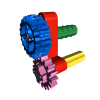
More opinion about custom 3D printed Technic parts
896gerard posted a topic in LEGO Technic, Mindstorms, Model Team and Scale Modeling
Dear readers, For a new project that started a while back (about a year ago), I was investigating a certain track configuration for a tracked vehicle. It pointed out that I needed a lot of ground clearance from the track wheel, but the track wheel could not be two studs wide: the tracked vehicle is only 15 studs wide and a lots of gears, motors and linkages need to be in between. As you can see, the standard wheel above is two studs wide due to a ring of 1/2 a stud that supports the track. This ring is not always necessary. In fact, the tracks barely even touch this ring under normal driving. A lot of you will recognize the difficulty with this wheel: it protrudes half a stud to both sides. In many designs, the number of horizontal studs is uneven: an M motor, XL motor, frames, differential, everything has an uneven width when measured in studs. This enables a symmetrical design as Lego Technic has no beams with even lengths (only 3, 5, 7, 9 ..). That's why many Technic designs of this day are an uneven number of studs wide. This is in contrary to the olden days, where all Technic components and widths were even. Check for example the old style liftarms, differential, frames, motors and even battery boxes. With this theory lesson over, it is easy to see why this track sprocket introduces a problem: when the wheel is mounted in the uneven Technic system (to get a nice symmetrical design with uneven Technic beams), the wheel size is even! So the wheel can not be connected to a liftarm at the place where the axle connects to the wheel. There needs to be a distance of 1 stud to any supporting liftarm. This is mostly done with a bush or a 3L thick liftarm. This also means that to mount this sprocket very strongly, the minimum width of the structure (when fit in an uneven system) is 5 studs. Then I started thinking: how nice would it be if there would be NO distance to any supporting liftarm? In that case, the sprocket has to be only 1 stud thick and the supporting structure is only 3 studs wide. Also, the support ring has to go. This is an enormous space saver when the maximum width of your vehicle is 15 studs.. I decided to draw the part in Solidworks and print it with my own 3D printer. Out of curiosity, I checked GrabCad to check whether someone got the same idea too. To my amazement, somebody had already tried this part, with the internals to be the 40 teeth gear. This is done with a reason. A standard 3D printer is generally very bad at printing axle holes. If you draw the outline of a standard Lego Technic part (that has a nice axle hole) into your 3D printed part, the part will be connected firmly inside the model(nice) while the axle is inserted into a Technic part, so no troubles with cracking plastic will occur. In short, I printed that part. It didn't work. (See image below). It turned out that every 3D printer is a little different. A tiny offset can cause a diameter difference, which then will cause friction, because the track doesn't fit around. The wheel needs to be perfect to make the solution work. That's why I decided to design my own custom sprocket wheel from scratch. This was my first 'from scratch' attempt. As you can see, the pin and axle holes do not have great quality. A revised 3D design is in the image below. As you can see, there is a large hole in the middle. This hole fits two 4185 pulley wheels (shown right) very tight. This means the vehicle is connected to a nice and round axle hole, while the 3D printed part is also fit very well to the vehicle. The sprocket diameter is not arbitrary as the number of 'lobes' is fixed: there are no half lobes, otherwise the wheel won't work.. That means that for the same tracks, a limited number of wheel diameters exist. As you can see, there is a slight ring in the 1 stud wide sprocket wheel, not all track support is gone. The 3D printed results: I was really happy with the quality of this wheel, the drawbacks from 3D printing don't show up and the wheel is very strong and straight. In the image below, is is visible that the tracks fit very smoothly around without additional friction. It is also visible that the wheel is just as wide as two pulley wheels, so one stud. I was so amazed when the 42095 set was launched. There was my not-published-about part, exactly the same size, in a real Technic model! And now there will be 4 DBG ones in the 42100 Liebherr, which will drop the price. There is one 'slight' drawback though. My 3D printed wheel is only one stud wide, needing only a frame of 3 studs wide to support it. The new 42100 sprocket wheel has the 1/2 stud ring protruding out of it on both sides, taking the drawback of the old wheel onto the new wheel. That's a pity. It could have been so nice. Then comes the question: why would you 3D print parts? That's cheating. And I agree. It is cheating. I never do this in my models. You are allowed to check my YouTube. I even built of a 3D printed way of getting three axles through a Lego Technic turntable but never used the solution as I do like pure models. Then, why am I doing it now? Because currently, I'm using Lego Technic as a strong platform for a scale model that requires 100% of the quality of Lego Technic, but cannot do without adding custom parts. Even the most skilled builder cannot work his way round sprocket wheels that don't exist. That's why I see it as an engineering project, and from that prospect, creating your own parts (when all else fails or doesn't exist!!) does not show lack of skill but broadness of view.. Surprisingly, some other minds thought alike and brought a Lego Technic wheel of the same size on the market. Too bad.. Let's start building and stay thinking!- 19 replies
-
- 3d printer
- 42100
-
(and 4 more)
Tagged with:
-
Hi Everybody!!!! I m really new to designing so I kind of need some help!!!! PLeaaaase :) I basically bought some instructions of a moc and was not happy with it in general. did not like the details as well as the underlying structure so decided to give it a go and downloaded studio! I m really excited and been working on the project at least a month now and must say I m handling it really well! BUT this particular set nets nets strings tubes that need flexing etc. That is where I got a problem!!! For example nets are not even available on the program and tubes are really hard to manipulate and connect... I did a search on you tube and in the forum but did not find an answer... I would really appreciate any help or advice!!!
-
Hello guys ! Here is my Oil refinery, which I have completed recently . It is a mini version of Atmospheric distillation unit, which is a primary process in oil production. Everything is made as close to reality as possible with and opportunity for addition of more units and making even larger plant . There was a local competition celebrating 55 years from oil production in Bulgaria and I sent some photos of my creation. Last week I was contacted from the organizers and they asked if they could buy the set from me and store it at their museum. I have never considered selling a set or creation before and feel a bit confused. Can you advice me what kind of price I could want for it ? https://myalbum.com/album/sTEPkCBPCtBq
-
Hey guys, I know that several people before me created similar threads but here, there are some specific people from whom I would really like to learn how they design modulars or non-modular buildings, from where they get inspiration, how do they start to design and which techniques they use to create their incredible buildings - so I mention them here. Would be extremely appreciated if you can share some of your knowledge and experiences. @snaillad, @cimddwc, @RoxYourBlox, @Pate-keetongu, @alois, @Norton74, @peedeejay, @Pakita, @lookl, @paupadros, @Kristel, @BrickyBoy, @AllanSmith, @fillishave, @Xenomurphy, @Brickenberg, @Jellyeater, @oirad 72, @sander1992, @DigitalDreams, @Skalldyr, @drdesignz, @Wodanis, @Berthil, @tkel86, @Captain Green Hair, @Stelario, @spaceman76, @PaddyBricksplitter, @Kalais, @pj_bosman, @Man with a hat, @Basiliscus, @kris kelvin, @Lasse, @Morty, @Sheriff von Snottingham, @Pepa Quin, @Inyongbricks, @mautara, @flat_four, @jaapxaap, @quy, @sasbury, @chumuhou, @Nannan, @nebraska, @Elostirion, @Imagine, @puddleglum, @genecyst, @Luky1987, @Gabor, @MichalPL, @higdon, @Gabe Umland, @Startbrickingtoday, @dvdliu, @Xtopher, @Toltomeja, @Klikstyle, @Colonel, @andybear@hk, @koffiemoc, @Naptown11, @SavaTheAggie, @tsi, @Regenerate builder, @mccoyed, @Brickextreme, @brickextreme2, @Wedge09, @SERVATOR, @BrickRally217, @macsergey, @Superfunk, @Ayrlego, @Chorduroy, @Dfenz, @denil85, @vecchiasignoraceppo, @SlyOwl, @kreimkoek, @Spacebrick, @frumpy, @teabox, @mouseketeer, @norlego, @Subix, @Bricksky, @TJJohn12, @Nick Barrett, @Legodt, @Danpb, @CorvusA, @Chapachuk, @tkatt, @otterlilly, @ranghaal, @nuno2500, @Hoexbroe, @wingyew29, @de-marco, @theycallmemrdarko, @savetheclocktower, @hugosantos, @Nieks, @TheBear, @TheLET, @Svelte, @modestolus, @exis, @wanseetoon, @Erdbeereis, @dalle, @chiukeung99, @eos512, @stej123, @6kyubi6, @LegoJalex, @Brickthing, @Anne Mette, @Ymarilego, @Clark, @Matija Grguric, @Ron Dayes, @Neverroads, @Kapp, @o0ger, @Asper, @Bennemans, @Matn, @Romanos, @Esben Kolind, @Minifig Lecturer, @Skrytsson, @brickbink, @sweetsha, @Konajra, @frogstudio, @WetWired, @pinioncorp, @Scrat, @crises_crs, @Nightfall, @SzU, @lisqr, @Huaojozu, @Klikstyle, @Bricked1980, @oo7, @brickbink, @Derfel Cadarn, @Priovit70, @CoolerTD, @Swan Dutchman, @Parks and Wrecked Creation, @Know Your Pieces, @adde51, @Lindon, @MaximB, @Zilmrud, @Mestari, @Fenom, @Adeel Zubair, @FiliusRucilo, @Wineyard, @vedosololego, @JanetVanD, @sdrnet, @Vincent Q, @Cecilie, @papercla, @Aliencat, @fonz, @Teddy, @Majkel, @Disco86, @Jasper Joppe Geers, @jaredchan, @Legopard, @Rolli, @Anio, @jalemac34, @Vincent Kessels, @Delbaerov, @Giacinto Consiglio, @ryantaggart, @vitreolum, @Alex, @eurotrash, @gabrielerava, @L@go, @STHLM, @sonicstarlight, @DK_Titan, @wooootles, @Hinckley, @castor-troy, @ER0L, @polarstein, @Elysiumfountain, @Tobysan, @Tijger-San, @Gunman, @alex54, @Palixa And The Bricks, @Redhead1982, @thomassio, @carebear, @RogerSmith, @gotoAndLego, @2013-lego, @niteangel, @MnnMtq, @kevin8, @koalayummies, @sheo, @hermez, @stef2280, @Cunctator, @domino39, @CarsonBrick, @eliza, @brickcitydepot and @Dakar A I know, that list is enormous, there are some who designed billions of buildings and some just one but they all absolutely deserve to be here! The people I mentioned here are personally my favorite MOCers (according to my taste). —But others, please feel free to share your knowledges and experiences, maybe I forgot to mention you or I just didn’t discover your beautiful buildings, and in this way I’ll discover
- 93 replies
-
- inspiration
- designing process
- (and 20 more)
-
Hi everybody, With the new Alien: Convenant movie coming to cinemas this May, I wanted to pay tribute to the original Alien motion picture (1979) by building the space ship in which this sci-fi classic is set – the USCSS Nostromo. Since there are already some beautiful Lego designs of the Nostromo ship (the “towing vehicle”), I wanted to do something different. As Alien fans will know, in the first few minutes of the movie, a massive refinery is moving silently through open space. I would try building this ore refinery! I hope you like the result and thank you for your feedback and comments. A special shout-out goes to the Arvo Brothers, who did some amazing Alien designs. Their work and our mutual passion inspired me to start this first Lego project . The Lego Model: Bricks: 3'144 Scale: 1:42000 (approx.) Length: 55 cm (22 in) Width: 40 cm (16 in) Height: 38 cm (15 in) Weight: 3.4 kg (7.5 lb) The build After doing some research; I started with new and old dark gray bricks. Halfway in the project the model looked like a dark “blob” and I decided to change the color to light gray. After I used up all my old gray bricks, I spend way too much money on buying bricks – especially small parts for the detailing. At first I thought the different coloring of the bricks would not work, but the fact it is not completely build out of new bricks fits the model well. The Challenges One of the main challenges, was the decision to having the top- and bottom section inverted. The reason for doing this, was to allow me to detail the model with round bricks both on the top as well as the bottom. It had to look like a refinery with tanks, pipes and structures. With every brick, it became more evident, the stability would be a challenge. The two biggest towers standing in the rear became quite heavy. This works in space with zero gravity, but on earth this means the model started tipping backward and looked more and more like a banana! After many, many trails and errors it finally worked in the end. I hope you out there like it! You can find all the pictures here on Flickr. Cheers, Remco
- 15 replies
-
- alien
- ridley scott
-
(and 10 more)
Tagged with:
-

[PAID JOB] Digitally Design me a Imperial Bunker! ($300 Budget)
Ryancup posted a topic in Buy, Sell, Trade and Finds
Service Status: Still looking for somebody to perform this task. Hello, as the title states; I am for looking for somebody who can digitally design me a imperial base with a budget of $300 in total as well as create a list of bricks to purchase from bricklink so I can build it myself. I expect the model to be detailed, high quality, and look good. I never made any builds digitally so I'm not sure how I would be able to rebuild it from a online model but I'm sure you can help with that. Total build budget is $300. You get paid the remaining amount after cost of bricks. So for example, if the build costs $200 from the bricks, then you get $100 as payment. You may use any software as long as it can be easily reproduced physically. I think stud.io would be a good software to use as it links with bricklink to buy parts easily. Here are the specifications and features of the build. Also includes picture examples from similar MOCs and feedback on them. This document has been recently revised with more detail on 7/24, https://pastebin.com/9FDgvCRB Post here or PM me if you are interested in doing this service.- 9 replies
-
- custom build
- imperial bunker
-
(and 10 more)
Tagged with:
-

How do you design for buildability?
NathanR posted a topic in Digital LEGO: Tools, Techniques, and Projects
I spend long periods away from home and my Lego bricks due to my work, so I end up doing a lot of design in computer with the likes of LDD, LDraw/bricksmith, and mecabricks. The problem is that none of these have any "physics" in them, I can't ever see how strong or stable the model is. So I end up spending hours agonising over the way the bricks are stacked, worrying over whether or not they will lock together solidly enough in real life. I also spend ages checking brick link and Lego bricks and pieces to make sure the pieces I use are available in the colours I choose, but that's another story. When I finally do treat myself and buy the bricks for one of my creations, they invariably fall apart. A couple of years back it was a 50 piece micro-scale particle detector that took 2 hours to get together and exploded at the slightest touch (and I do mean that literally, bits went flying all over the room!). My latest fiasco is a model of the Mercury-Redstone rocket, which I designed to go with the Lego Ideas Saturn V. It's just a stack of 2x2 round bricks with three axles inside due to it's height, yet despite my best efforts to put the axle transitions well inside bricks, the rocket easily falls apart into three neat chunks (one for each axle). So, what's the secret? When you design in computer do you care at all about how the model would behave in real life? And if you do care, do you have any tips on making sure that the model holds up well when physically built?- 8 replies
-
- design
- techniques
- (and 7 more)
-
-
- tc10
- pneumatic
-
(and 82 more)
Tagged with:
- tc10
- pneumatic
- technic
- moc
- engine
- 4 stokes
- nz
- lego technic
- v8
- impro
- tv
- wliia
- whose line
- comedy
- star wars battlefront
- the empire strikes back
- 1.4 fd p-tower
- battle of hoth
- at-at
- at-st
- star wars rebels
- rebel alliance
- a new hope
- return of the jedi
- rogue one
- city
- town
- bank
- key bank
- lego ideas
- landmark
- moc
- arc de triomphe
- france
- ag
- mantis
- technic
- scania
- truck
- yellow
- lowloader
- moc
- cv-project
- trailer
- mall of america
- lego shop
- lego brand retail
- lego store
- moa
- truck
- rc
- challenge 4a
- oleon
- 3rd party
- kit
- drone
- lego
- modular
- block
- lego
- modular
- building
- ideas
- brick
- minifig
- afol
- moc
- house
- falcon
- millennium
- design
- vedosololego
- micro
- custom
- furniture
- room
- diorama
- advent
- calendar
- city
- 2016
- octan
- ag
- rexgain
-
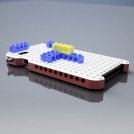
LEGO phone case, (primarily) for use in LEGOland
LEGO_DT_designs posted a topic in Special LEGO Themes
Hello, I'm making this post to seek evaluation from people who love LEGO or have young children who love LEGO and this seemed like the best place to get accurate and reliable feedback. I have designed a phone case (for the IPhone 6) with the interest of creating further interaction with the LEGO land park; basically the idea of having people go through the park searching for puzzles with their camera through the use of an app, then completing the puzzle by creating a and image on the back of the case using 1x1 flat tiles and showing them to scanners situated all over the park, this would increase consumer flow throughout the park and create a fun challenge for parents and kids alike. (the product would still be expected to be used as a general phone case and would provide fun in a normal day as it provides a very versatile build platform to create from) I know there are some issues with the alignment of the LEGO studs and the Technic pin holes, but this product is still in a prototyping phase so this is understandable. If you have any comments or questions regarding anything to do with the design. (it's aesthetics, manufacture, safety, function. etc). please make a comment below as ANY contributions would be greatly appreciated. Thank you URLs for pics: https://www.flickr.com/photos/149486063@N07/shares/2MwR9H https://www.flickr.com/photos/149486063@N07/shares/425txQ -
I would like the Mixels balljoint cup 1x2 plates, but with the cup rotated 90 degrees for greater movement freedom. I could also use 1x2 plate Mixels balljoint cup with the cup on top like 11458 and one with cup on bottom like 24201 or 18677. Mixel cup one end, jumbo cup other end. Mixel ball one end, jumbo ball other end. I would also like a 1x2 plate (or more) with studs on top and bottom (no clutch side). What would you more experienced Lego builders want?
-
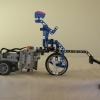
Truss design - are these ones OK?
Captainowie posted a topic in LEGO Technic, Mindstorms, Model Team and Scale Modeling
Hi folks. I need some advice from people who have experience building large structures. I'm looking at building a GBC module that takes balls across a gap between two tables, that's high enough to walk under. I need a vertical lift of about 1.3m, and a horizontal travel of about 1m. Now, this would be by far the largest model I've ever undertaken, so my intention is to design the thing in LDraw before I buy anything. This means I can't see how sturdy the structure actually is, so I'm asking you all whether what I've designed so far is sensible. I've got two slightly different truss designs. One that I think would go better for the vertical parts, and one for the horizontal. Each is a single unit 16 studs in length, with the idea that you join as many units together as you need to get the length/height required. First, the vertical segment: And what three of them together look like: I feel that this truss is going to be strong in compression/tension, but all that space in the middle makes me nervous - is the 5x7 frame box going to be solid enough to make it strong in torsion as well? Next, the horizontal segment: And three of them together: This one I think would be quite resistant to bending in the up/down direction (exactly what you want for a horizontal beam supported at its ends), less so in the side/side direction, but also strong in compression/tension. This one would be somewhat heavier than the other - overkill? or is the extra strength warranted? I'd appreciate your thoughts on these two truss designs. If you want to see the .ldr file that these images came from, it's here. Regards Owen. P.S. If anybody wants to take these and make them into a tower crane for [TC8], go right ahead. EDIT: Yes, I know there are no triangles. I am relying on the rigidity provided by the 5x7 frames in place of diagonal bracing. -
My first model of 2017, I have had the idea for this build for sometime, and finally found time to do it. The building is modeled after Bits and Pieces, the general store in Solitude from the game Skyrim. I used the same stonework design as I did in my Nordheim Farmhouse creation, though this time in dark bley. A tutorial for that technique is available. The rather complex layout of the building offered some challenges to recreate in LEGO, but I’m quite pleased with the finished result. It lifts off the base and hinges open to reveal the full interior. Previous story installments: 1st, 2nd, 3rd. Sigurd’s General Goods is the largest general store in Daydelon. It not only provides supplies, but is also a common meeting place for the people of the city. Today Glorfindel is met there by a Mitgardian courier. It had been two months since Glorfindel's distasteful run in with Lord Tuinis, and in that time Glorfindel had made several other more successful trips to lords and jarls in the area. He also made the journey to Valholl for a council of Parliament, and now was checking in at Daydelon before heading back to the border. "Greetings Sir, I bring word of the council's decision..." I tried my hand at a few photo edits with this build as well: As usual, there are plenty more pictures on our website. Did not make my goal of completing Age of Mitgardia last year, but now I'm only 3 mill builds away, so the end is near C&C appreciated .
-
Finished my last SWAT TEAM Lego Minifigures . Each Minifigure is made with a Custom Design and parts, I hope you like it!
-
My 10th and last entry to the Colossal Castle Contest (small miscellaneous category). This was mainly a small fun build to mess around with new designs. I’m quite pleased with how it turned out, and that I was able to get every element actually attached, except the 3 logs which rest securely in the firewood bin. First installment in the story. After his first successful meeting with the Jarl of Balkr, Glorfindel had high hopes that he would meet with similar success when visiting other jarls and lords on the Nocturnus border. Dedan had set off for another clansman village, while Glorfindel's next trip took him to the medium sized town of Firoir. A single guard stood watch at the gate, or rather sat watch, as he was resting on a stool. "What's your business here?" He questioned, not bothering to stand. "I need to speak with Lord Tuinis," Glorfindel replied, taking in the somewhat disheveled uniform of the soldier. "Just straight on down the main road to his manor then, can't miss it." "Thank you, and good day," said Glorfindel, to which the guard merely grunted. Continuing on his way, Glorfindel saw that the guard was right and that it would be almost impossible to miss the large ornate manor. After an equally brief conversation with the steward, Glorfindel found himself face-to-face with Lord Tuinis in a lavish wood paneled room. "And what brings the esteemed Sir Glorfindel to the humble town of Firoir?" Asked Tuinis with a sneer. "Urgent orders from Elon Chorian no doubt, more men and supplies needed to defend our beloved capitol city?" Somewhat taken aback by the lord's belittling manner, Glorfindel tried to be diplomatic in his response: "It's always an honor to be received into any town of Mitgardia, and while the capitol is secure, I do bring word from Chorian that the villages, towns, and cities along the Nocturnus border should be fortified against a possible attack from the darklands. Tuinis jeered, "Of course! It's easy enough for him to order new fortifications and more soldiers to be trained, but we lords always pay the price for his petty concerns. Not a year ago, I was ordered to send troops and reserves of goods to the North for defense against the Algus threat. Yet this supposed threat to our existence was never even sighted by my scouts!" "Surely you don't mean to question the validity of the Algus attack?" Glorfindel asked incredulously. "Northern Mitgardia paid a dear price to keep the Algus from advancing to your doorstep! And if your scouts really never picked up on that threat, that only betrays their incompetence!" "You dare insult a lord of Mitgardia to his face at his own hearth?" spat Tuinis, "I know your kind, merely a lackey of Valholl, constantly sticking your nose into your better's business, and getting rewarded for it!" For a moment, Glorfindel could only consider the satisfaction a swift blow to the insolent face before him would provide, then with a great effort he controlled himself and turned from the room. Tuinis aimed one final insult at the retreating figure "That's right, crawl back to your fancy city and learn not to meddle. You have no authority here, boy." Another view of the build. I hope you're enjoying this storyline with Glorfindel, I'm having fun actually using my character for once Comments and suggestions always welcome
- 11 replies
-
- mitgardian freebuild
- glorfindel
- (and 9 more)
-
Hello, I was wondering who is the designer of the original minifigure? I think, like probably, lot of us :) it so brilliant idea. Minifigs are just awesome :) I am curious is he/she designed any other famous things. So far I found only info that first minifigs were released in 1975 (non-moving ones) and in 1978 was first release of sets with "real" minifigs. But who designed them? P.S. First ever released minifigs from 1978:
-
I've made a traintunnel entrance for a small tunnel that i will place next to my modular building. Any ideas on this design? (It is wide enough, as the train is almost straight entering the tunnel!) The large arch will be changed by a LBG piece....

